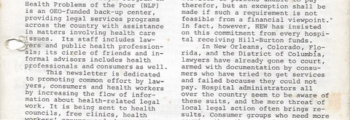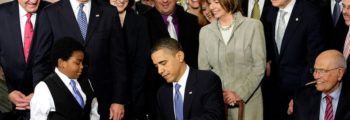The National Health Law Program, founded in 1969, protects and advances health rights of low-income and underserved individuals and families. We advocate, educate and litigate at the federal and state levels to advance health and civil rights in the U.S.
Our lawyers and policy experts fight every day for the rights of the tens of millions of people struggling to access affordable, quality health care coverage free from discrimination.
The National Health Law Program defends and fights to expand health and civil rights of those most in need and those with the fewest resources. We strive to give a voice to low-income individuals and families in federal and state policy making, promote the rights of patients in emerging managed-care health care systems, and advocate for a health care system that will ensure all people have access to quality and comprehensive health care.
We are a force in the courtroom, working to ensure that low-income people and underserved communities can obtain the quality care to which they are legally entitled and holding state and federal Medicaid agencies accountable for their programs.
The National Health Law Program has been on the front lines for 50 years, providing vital leadership and expertise on health care law to federal and state policymakers, advocates and the media. We amplify our impact by collaborating with national and state-based advocacy organizations and pro bono partners to ensure our work betters access to quality health care now and for years to come.
Meet the Staff
Our advocates in Washington, D.C., Chapel Hill, and Los Angeles.
Meet the Board
Nationally recognized attorneys, trailblazing legal service lawyers, leading civil rights advocates provide invaluable support to the National Health Law Program’s mission to ensuring quality, comprehensive health for all people, not just the privileged.
Work Here
Join the fight to represent those who cannot afford high-priced lawyers and lobbyists to protect their health and civil rights. There is nothing more rewarding than collective action to right the wrongs of the past and create a better tomorrow.
Our History
For a complete timeline of the National Health Law Program’s 50 year history, click here.























